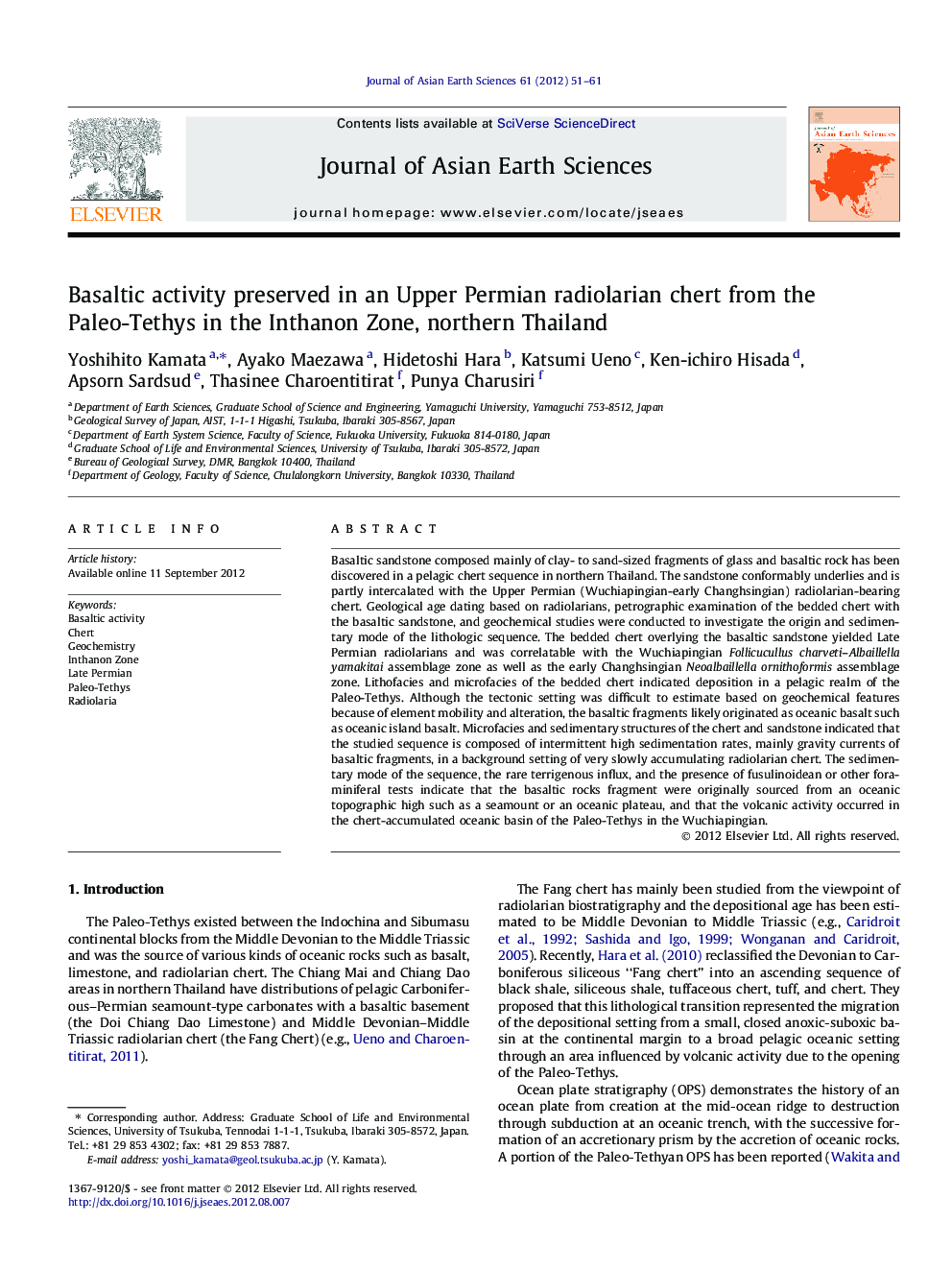| Article ID | Journal | Published Year | Pages | File Type |
|---|---|---|---|---|
| 4731146 | Journal of Asian Earth Sciences | 2012 | 11 Pages |
Basaltic sandstone composed mainly of clay- to sand-sized fragments of glass and basaltic rock has been discovered in a pelagic chert sequence in northern Thailand. The sandstone conformably underlies and is partly intercalated with the Upper Permian (Wuchiapingian-early Changhsingian) radiolarian-bearing chert. Geological age dating based on radiolarians, petrographic examination of the bedded chert with the basaltic sandstone, and geochemical studies were conducted to investigate the origin and sedimentary mode of the lithologic sequence. The bedded chert overlying the basaltic sandstone yielded Late Permian radiolarians and was correlatable with the Wuchiapingian Follicucullus charveti–Albaillella yamakitai assemblage zone as well as the early Changhsingian Neoalbaillella ornithoformis assemblage zone. Lithofacies and microfacies of the bedded chert indicated deposition in a pelagic realm of the Paleo-Tethys. Although the tectonic setting was difficult to estimate based on geochemical features because of element mobility and alteration, the basaltic fragments likely originated as oceanic basalt such as oceanic island basalt. Microfacies and sedimentary structures of the chert and sandstone indicated that the studied sequence is composed of intermittent high sedimentation rates, mainly gravity currents of basaltic fragments, in a background setting of very slowly accumulating radiolarian chert. The sedimentary mode of the sequence, the rare terrigenous influx, and the presence of fusulinoidean or other foraminiferal tests indicate that the basaltic rocks fragment were originally sourced from an oceanic topographic high such as a seamount or an oceanic plateau, and that the volcanic activity occurred in the chert-accumulated oceanic basin of the Paleo-Tethys in the Wuchiapingian.
